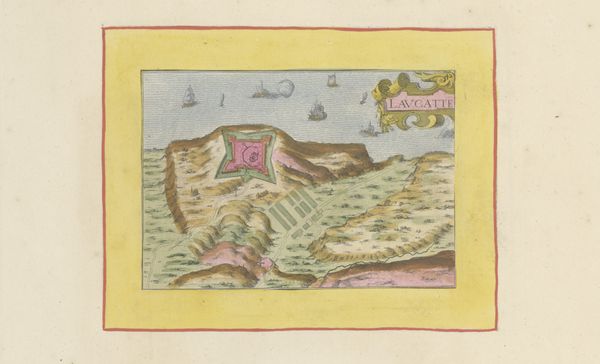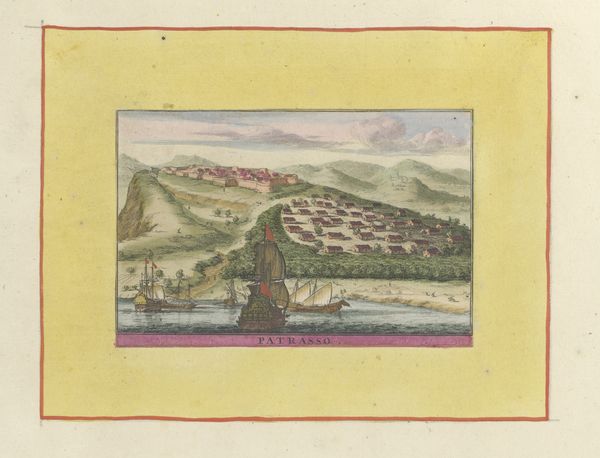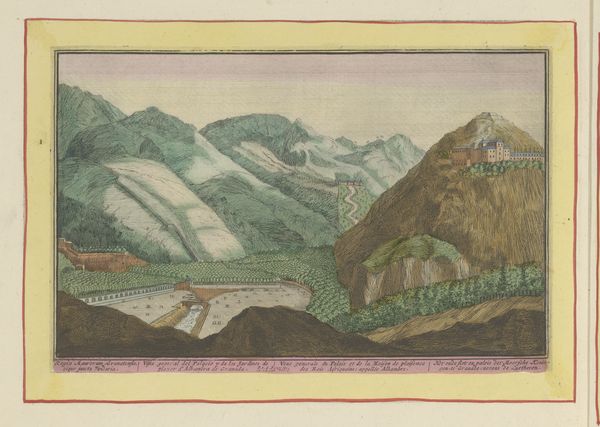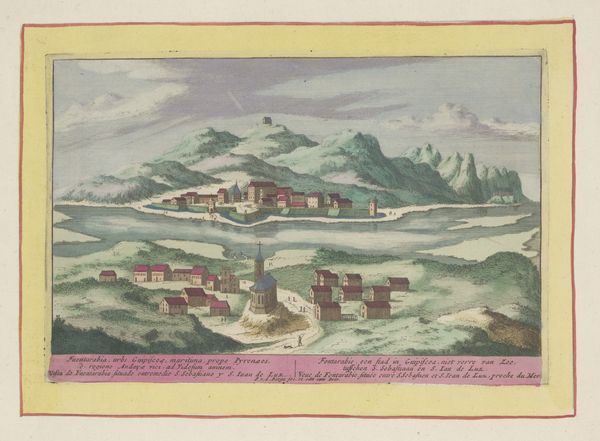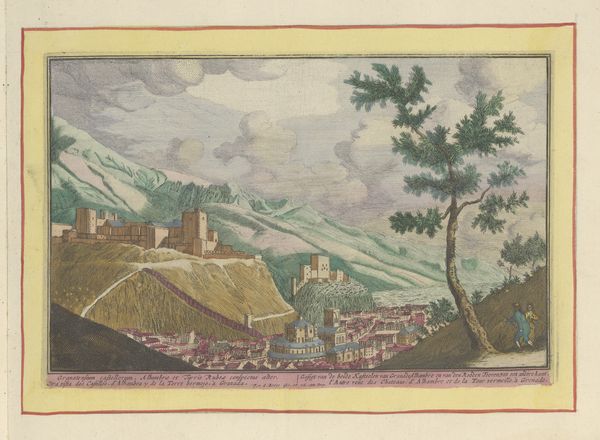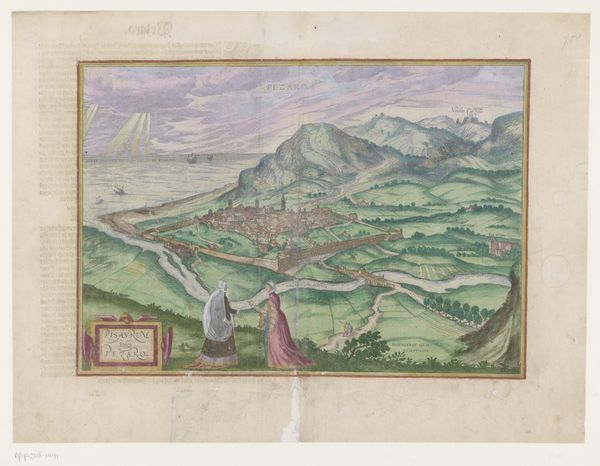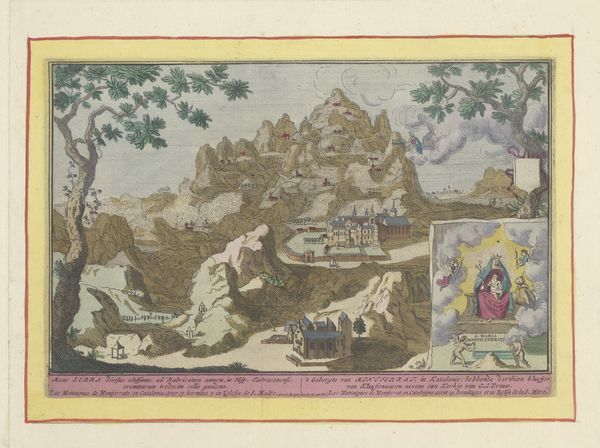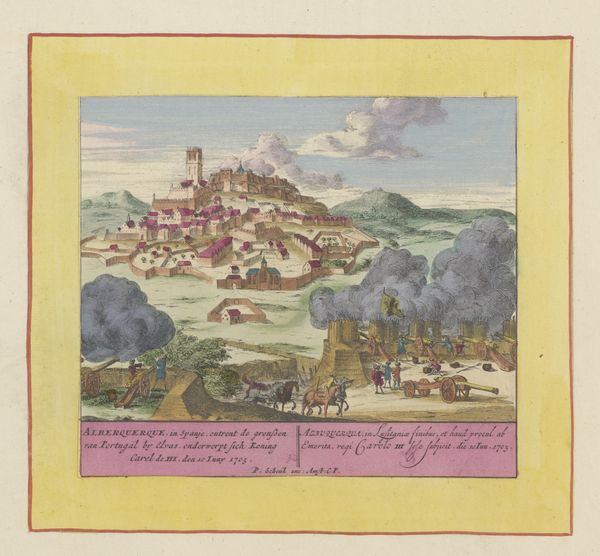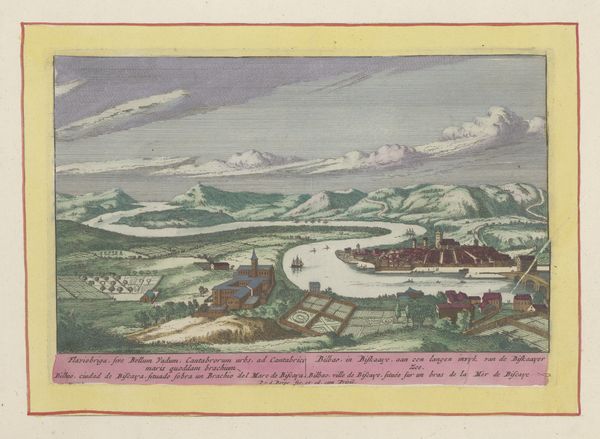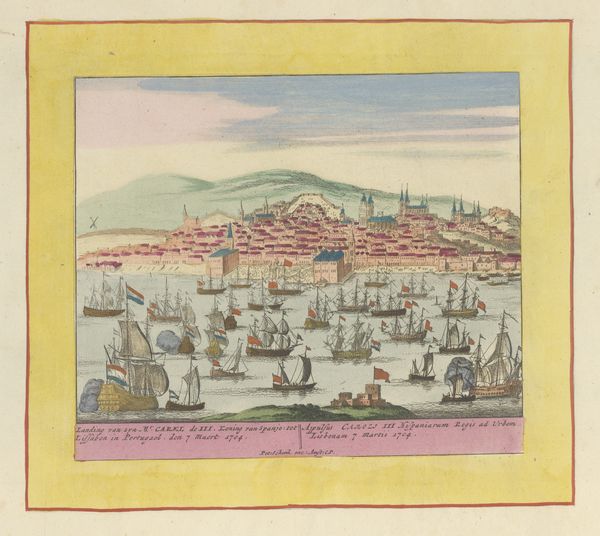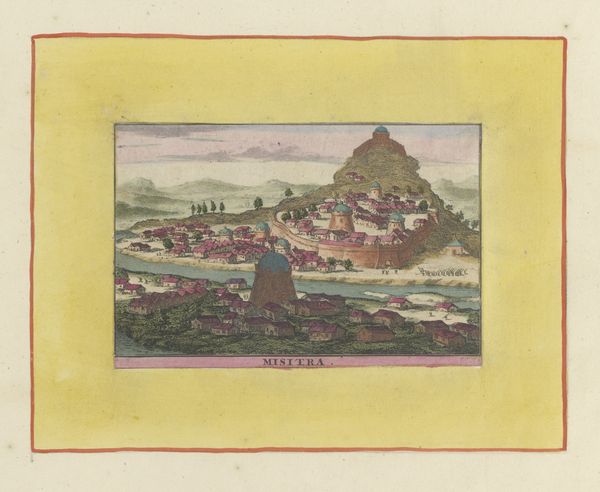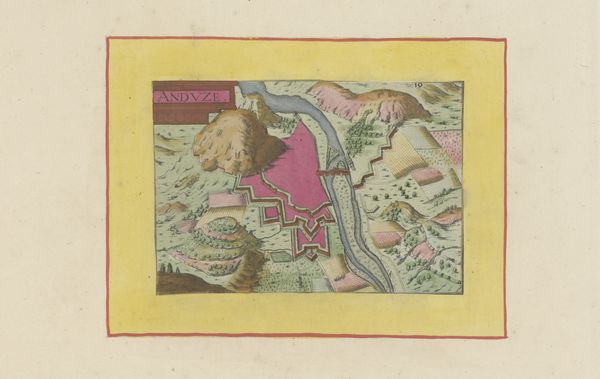
painting, paper, watercolor
#
water colours
#
dutch-golden-age
#
painting
#
landscape
#
perspective
#
paper
#
watercolor
#
coloured pencil
#
cityscape
#
genre-painting
#
watercolor
Dimensions: height 104 mm, width 149 mm, height 532 mm, width 320 mm
Copyright: Rijks Museum: Open Domain
Curator: Looking at "Gezicht op Sauve," painted in 1638, the landscape appears remarkably peaceful despite what I imagine to be a rather fortified subject. Editor: Yes, it has an almost dreamlike quality. The watercolor on paper lends it a soft, gentle feel. But you're right, there's an underlying tension too; those walls tell a story of defense and control. Curator: Exactly. The artist, whose name is unfortunately lost to us, gives us this panoramic view which I think implies both territorial claim and a display of power. That strategic river placement emphasizes protection but also connectivity and trade. How does the artist choose what symbols to present as important to understanding this urban location and political position of the people? Editor: For me, the geometric patterns of the fields down below—those almost pastel squares—hint at a careful ordering of society. You get a sense of a highly structured community even just from those blocks, this push for the controlled perspective, this organization, it is no accident. There's pride in cultivating that land and securing the position of those houses within its grounds. It almost reads like a carefully planned set piece meant to reassure viewers. Curator: Or even to communicate stability, control...it reminds us that imagery was not neutral. Watercolors allowed for a wider consumption and therefore influence. And the choice of aerial perspective… it provides the beholder a God’s eye point-of-view. To see this town in its completeness suggests not only understanding, but power. What impact do you think this picture may have made for people viewing this at the time of production? Editor: Absolutely. And seeing it today, understanding that these artistic choices served a clear sociopolitical function really changes my view. The way art served to shape identity and enforce particular ways of thinking is quite sobering, in retrospect. It’s much more than pretty landscape in pleasing watercolors. Curator: Right. Thinking about art’s role in shaping power structures throughout time makes the work all the more resonant for me. Editor: Indeed, a beautiful vista harboring many social cues.
Comments
No comments
Be the first to comment and join the conversation on the ultimate creative platform.
